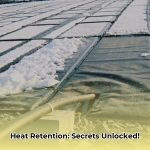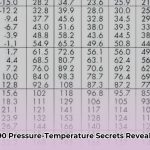Understanding Plastic Melting Points
Have you ever wondered why some plastics melt faster than others? Melting point is a critical property influencing how plastics behave under heat. This guide provides a comprehensive overview of plastic melting temperatures, their underlying science, and practical applications in various fields.
What is Melting Point?
A plastic’s melting point isn’t a single temperature, but a range during which it transitions from solid to a softened, pliable state, and eventually to a liquid if heated further. This range depends on the plastic’s inherent structure and the presence of additives. Think of it like butter softening gradually on a warm stove, unlike ice which melts at a precise temperature.
Two key concepts are crucial:
- Glass Transition Temperature (Tg): The temperature at which a plastic becomes less rigid and more flexible, like a chocolate bar softening slightly after being refrigerated. This is essential for processes like thermoforming.
- Melting Temperature (Tm or Tf): The temperature at which the plastic truly flows like a liquid, vital for injection molding and extrusion.
A third, less desirable temperature is the Decomposition Temperature (Td), where the plastic breaks down, releasing potentially harmful gases.
The structure within a plastic greatly influences its melting behavior. Crystalline structures (like neatly stacked LEGOs) have higher, sharper melting points due to stronger intermolecular forces. Amorphous structures (like a pile of sand) have broader softening ranges due to more variable intermolecular forces.
Factors Affecting Melting Point
Several key factors affect a plastic’s melting point:
- Chemical Structure: Polar polymers (like Nylon) have stronger intermolecular attractions and thus higher melting points than non-polar polymers (like polyethylene).
- Molecular Weight: Longer polymer chains (higher molecular weight) typically lead to higher melting points due to increased entanglement. However, this effect plateaus at very high molecular weights.
- Crystallinity: Highly crystalline structures have higher and sharper melting points compared to amorphous structures.
- Branching: Branched polymer chains disrupt efficient packing, generally resulting in lower melting points.
- Additives: Plasticizers, added for flexibility, can lower the melting point. Other additives can have varied effects depending on their interaction with the polymer.
- Crosslinking: Highly crosslinked polymers (thermosets) don’t melt but decompose at high temperatures, behaving like a hard-boiled egg charring instead of melting.
Ongoing research continually refines our understanding of polymer behavior. While these factors provide a solid framework, there’s ongoing study into specific additive interactions and the dynamics of chain entanglement.
Plastic Melting Temperature Chart
This chart provides approximate melting temperature ranges for common plastics. Remember these are ranges, influenced by the factors mentioned above. Always consult manufacturer datasheets for precise values, especially for critical applications.
| Plastic Type | Melting Temperature (°C) | Melting Temperature (°F) | Mold Temperature (°C) | Mold Temperature (°F) | Typical Applications |
|---|---|---|---|---|---|
| Acrylonitrile Butadiene Styrene (ABS) | 210-240 | 410-464 | 50-80 | 120-175 | 3D printer filament, automotive components, LEGO bricks |
| High-Density Polyethylene (HDPE) | 130-135 | 266-275 | 20-40 | 70-100 | Milk jugs, detergent bottles, some plastic lumber |
| Low-Density Polyethylene (LDPE) | 105-115 | 221-239 | 20-50 | 70-120 | Plastic bags, food wraps, flexible tubing |
| Polyethylene Terephthalate (PET or PETE) | 250-260 | 482-500 | 70-90 | 160-190 | Water and soda bottles, food packaging, clothing fibers |
| Polyvinyl Chloride (PVC) | 160-210 | 320-410 | 35-50 | 95-120 | Pipes, window frames, flooring, some inflatable products |
| Polypropylene (PP) | 160-170 | 320-338 | 20-50 | 68-122 | Food containers, bottle caps, textiles, reusable plasticware |
| Polystyrene (PS) | ~240 | ~464 | 55-75 | 131-167 | Disposable cups, foam packaging, insulation, CD cases |
| Nylon 6,6 | 260-270 | 500-518 | 80-100 | 176-212 | Gears, bearings, rope, some clothing fabrics |
Melting Points in Manufacturing
The melting behavior of thermoplastics (the reusable type) is central to various manufacturing processes. Their ability to be melted and reshaped makes them highly versatile, particularly for high-volume production and sustainable manufacturing.
The type of melting—sharp or gradual—dictates processing methods. Crystalline plastics with sharp melting points require different handling than amorphous plastics that soften gradually. Understanding these characteristics is crucial for plastic processing optimization and achieving desired melt flow characteristics.
Consider these scenarios:
- Designing car parts: Tg is crucial for ensuring components maintain their shape and integrity under high temperatures.
- Creating thin films: Tm/Tf is essential for consistent melting and uniform film thickness during extrusion.
Here’s a table with approximate processing temperatures:
| Plastic | Melting Point (°C) | Approximate Injection Molding Temp (°C) | Approximate Decomposition Temp (°C) |
|---|---|---|---|
| HDPE (High-Density Polyethylene) | 130-135 | 180-280 | 350+ |
| LDPE (Low-Density Polyethylene) | 105-115 | 140-280 | 350+ |
| PP (Polypropylene) | 160-170 | 190-250 | 350+ |
| PVC (Polyvinyl Chloride) | 150-200 | 180-240 | 350+ |
| PET (Polyethylene Terephthalate) | 250-260 | 260-290 | 350+ |
| ABS (Acrylonitrile Butadiene Styrene) | 105 (softens) | 210-280 | 350+ |
Remember, these are approximate values, and actual behavior is influenced by factors like molecular weight, branching, and additives. These factors act as “fine-tuning knobs,” allowing manufacturers to tailor plastic properties for specific needs.
Current research seeks to improve the precision of predicting and controlling melting behavior. This ongoing exploration into molecular structures and processing conditions could lead to more innovative manufacturing technologies using plastics. Our understanding of these materials is always evolving.
- Vertical Axis Wind Turbine Design: Improving Efficiency and Overcoming Limits - October 29, 2025
- Wind Turbine to Power Home: Nacelle Design Improvements Advance - October 26, 2025
- Wind Turbine Blade Length: How Long Is Too Long? - October 24, 2025






![R410A PT Chart (Pressure-Temperature Chart): Updated [Year] r410a_pt_chart_edited](https://txgenco.com/wp-content/uploads/2025/04/r410a_pt_chart_edited-150x150.jpg)









